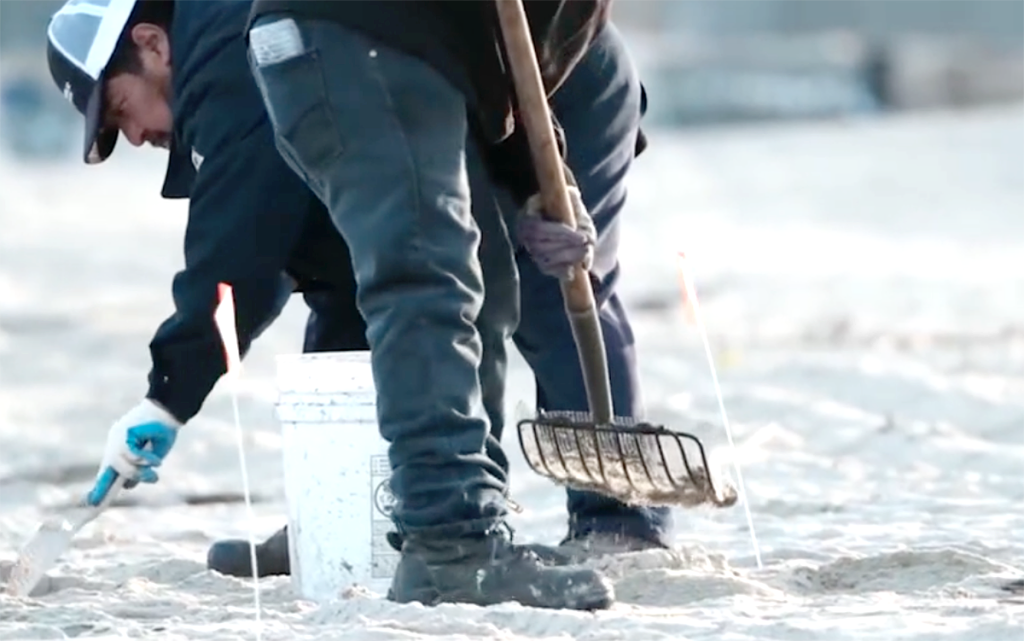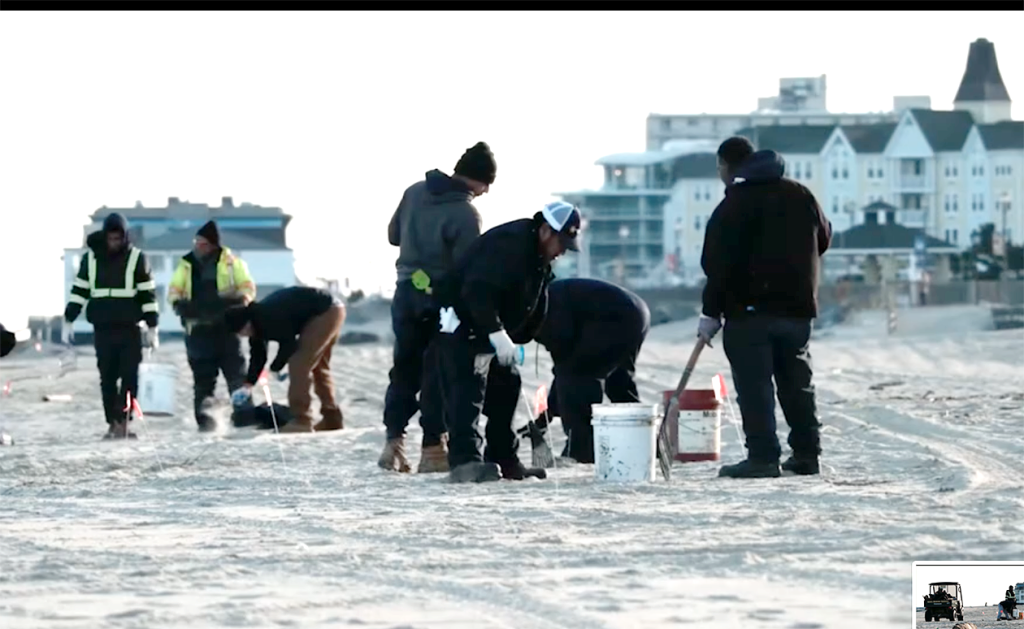
By Stephen Appezzato
MONMOUTH BEACH – Crews from the Coast Guard, state Department of Environmental Protection, Monmouth County and the National Park Service responded to reports of oil and tar balls washed up on Monmouth Beach and Long Branch beaches last week. Officials say approximately 1,000 pounds of tar balls and oiled debris were removed.
In late November, concerned residents and the environmental group Clean Ocean Action reported to officials that tar and oil balls had appeared on local beaches, posing a threat to wildlife and the environment. Agencies immediately flocked to the scene, launching a joint cleanup effort.
Crews conducted shoreline assessments from Sandy Hook to Asbury Park, documenting the extent of the tar balls present.
The debris was removed through manual cleanup efforts, like sand raking. Cleanup crews monitored the area over the weekend and as of Dec. 1, no new contaminants have appeared. On Tuesday, Coast Guard Air Station Cape Cod did a flyover from Lower New York Harbor to Asbury Park, reporting no observed oil sheens or debris in the water.
According to a release from Coast Guard officials, “The source of the tar balls is unknown and remains under investigation.” Additionally, they reported no “broader impact to the environment or wildlife at this time.”
On Nov. 30, within days of the first tar and oil balls being reported on the Jersey Shore, the Coast Guard confirmed in a statement that oil had been found along the shoreline at Coney Island Creek in Brooklyn, New York, while small “quarter-sized” tar balls were later discovered on a short stretch of Fort Wadsworth Beach on Staten Island.
The presence of more oil on the New York coastline around the time of the initial tar ball reports off Monmouth Beach raised questions about the connection between the two incidents.
“Presently, there is no determination that the two incidents are related,” the Coast Guard reported.
The tar balls and oil located in New York have been cleaned up and officials report no new sightings or a larger impact on the environment or sewer systems there either.
Tar and oil balls are dark, sticky clumps of heavy petroleum products which can be the result of an offshore oil spill or natural oil seep undersea. When oil is released into the ocean, finer petroleum products usually evaporate, while heavier products are left behind. These products react with the seawater, currents and wind to coagulate, resulting in dense oil clusters. According to the National Oceanic and Atmospheric Administration, tar balls are resilient and can travel many miles before washing ashore.
U.S. Rep. Frank Pallone (D-6) who helped raise the alarm and notify officials after the initial tar ball discovery, encouraged the Coast Guard to continue investigating the source of the oil, and “to investigate any connection between the incidents in New Jersey and New York to determine if there is a possible link.”
The article originally appeared in the December 7 – December 13, 2023 print edition of The Two River Times.















